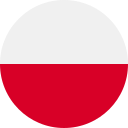Nauki Ścisłe ACT - Substancje i związki chemiczne
Tutaj nauczysz się niektórych angielskich słów związanych z substancjami i związkami chemicznymi, takimi jak "bufor", "substancja rozpuszczona", "halogen" itp., które pomogą ci zdać egzaminy ACT.
Przegląd
Fiszki
Pisownia
Test

a type of chemical element found in Group 17 of the periodic table, known for being highly reactive and commonly used in disinfectants and lights

fluorowiec, pierwiastek fluorowcowy
a durable plastic material used for packaging, bags, and various applications

polietylen, plastik
a lightweight and versatile synthetic polymer used in packaging, insulation, and disposable products

polistyren, styropian
a chemical element that is a vital component of DNA and bone structure, found in dairy products, meat, and nuts, playing a key role in cellular energy transfer

fosfor, pierwiastek fosfor
a colorless, volatile liquid solvent commonly used for removing nail polish and other substances from surfaces

aceton, propanon
a naturally occurring polysaccharide derived from brown seaweed, commonly used in various industries for its thickening, gelling, and stabilizing properties

alginian, naturalny polisacharyd pochodzący z brunatnic
a compound containing silicon and oxygen atoms, often forming minerals or glasses, with diverse applications in industry and nature

krzemian, związek krzemu
a single layer of carbon atoms arranged in a two-dimensional honeycomb lattice, known for its exceptional strength, electrical conductivity, and flexibility

grafen, pojedyncza warstwa atomów węgla ułożonych w dwuwymiarową sieć heksagonalną
a naturally occurring organic compound found in many fruits that contributes to their sour taste

kwas jabłkowy
a weak organic acid found naturally in citrus fruits like lemons, oranges, and limes, commonly used as a food additive for flavoring and preserving

kwas cytrynowy, kwas lemonowy
a chemical compound that contains phosphorus and oxygen atoms, commonly found in salts or esters of phosphoric acid, important for biological processes and industrial applications

fosforan, związek chemiczny zawierający atomy fosforu i tlenu
a type of elementary particle that is one of the six types, or flavors, of quarks that has an electric charge of +2/3 and participates in strong and electromagnetic interactions

kwark powabny, kwark czarujący
something that has specific chemicals or causes a chemical reaction that destroys harmful microorganisms such as bacteria

środek dezynfekujący, antyseptyk
a chemical compound important for regulating pH balance, found in baking soda and crucial for bodily functions

wodorowęglan, bicarbonat
a substance that is dissolved in a solvent, resulting in a solution

substancja rozpuszczona, solut
having absorbed as much of a substance as possible at a given temperature, reaching its maximum concentration

nasycony, przesiąknięty
(of a solution) containing volatile or highly flammable substances, such as diethyl ether

eterowy, lotny
describing chemical compounds that do not contain carbon-hydrogen bonds and are typically derived from minerals or non-living matter

nieorganiczny
a liquid that is capable of dissolving another substance

rozpuszczalnik, solwent
refering to substances that have a pH greater than 7, indicating a basic or non-acidic nature

zasadowy
containing or relating to salt

słony, solankowy
a substance that takes part in and undergoes a chemical reaction, leading to the formation of new products

reagent
(chemistry) a substance that causes a chemical reaction to happen at a faster rate without undergoing any chemical change itself

katalizator, aktywator
a solution containing a weak acid and its conjugate base, or a weak base and its conjugate acid, which maintains a stable pH when small amounts of acid or base are added

bufor, roztwór buforowy
a substance or compound used in a chemical reaction to detect, examine, or produce other substances

odczynnik
any of the elements in Group 18 of the periodic table, including helium, neon, argon, krypton, xenon, and radon, characterized by their inert nature and stable electron configurations

gaz szlachetny, gaz obojętny
a group of non-reactive gases that typically exhibit low chemical reactivity due to their stable electron configurations

gaz obojętny, gaz szlachetny
| Nauki Ścisłe ACT |
|---|